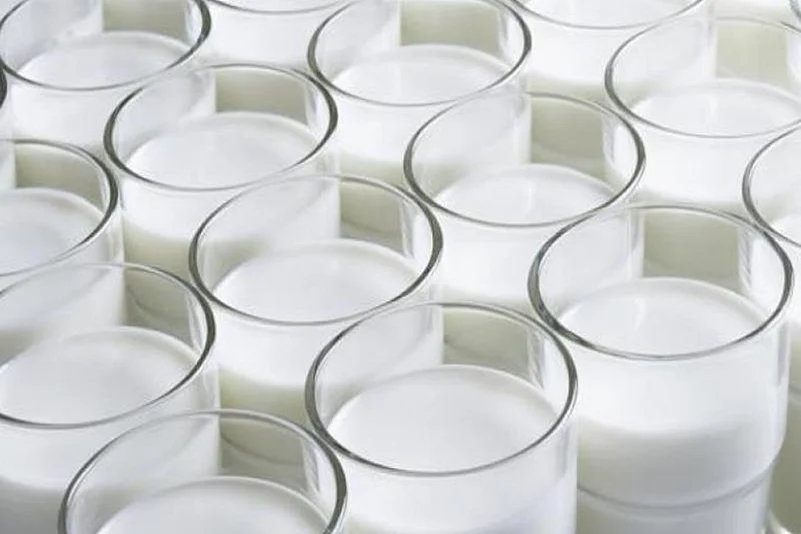Once again, experts bring up the linkage between the consumption of milk and diabetes. This time around, they point to the protective and beneficial characteristics of this common food product.
The link between diabetes and the consumption of milk is being actively explored globally. In this article, experts put forth the idea that milk is actually protective and beneficial for diabetes. It is of course common knowledge that milk is considered complete food, with a unique balance of nutrients.
Some people can show lactose intolerance, which is the inability to digest milk sugar (lactose), but generally humans have developed a capacity to digest lactose over the years. Lactose helps in brain development, milk proteins are good for muscle development and calcium is essential for bone strength, apart from several other benefits of the nutrients in milk.
There are certain sections of society that have raised discourse around the unhealthy nature of milk, particularly in connection with diabetes, and using this to push for plant-based derivatives that can become substitutes for milk in human diets. But we would like to point attention towards cross sectional as well as longitudinal data from India that clearly establish the protective nature of milk.
The first evidence that dairy and milk could be protective came from the Chennai Urban Rural Epidemiology Study (CURES) which showed that dairy has a protective effect against diabetes (2009 and 2015). Cross-sectional studies however, cannot establish a cause-and-effect relationship; for this we need longitudinal, long-term, follow-up studies. The Prospective Urban Rural Epidemiology (PURE) study published in 2020, in 21 countries in 5 continents on 150,000 individuals in which five parts of India were also involved, showed that dairy consumption was associated with lower incident (new onset) diabetes, hypertension, as well as metabolic syndrome. There thus seems to be a clear protection against diabetes after consumption of various dairy products, including milk.
There is also another view, that cow’s milk is linked to type 1 diabetes -- an old theory reported from some Scandinavian countries. In fact, subsequent studies and experimental evidence have disproved the link between cow’s milk and Type 1 Diabetes. We observe that owing to the lesser popularity of breast feeding in some western countries, and the consequent early exposure to cow’s milk for new born babies and infants in the first six months of life, there may be reduced immunity since they have not been exclusively breast-fed. But that is all.
It is important to highlight and open for discourse conjectures regarding Type 2 Diabetes and milk, such as those raised in an article by Nandita Shah (Nandita Shah. Milk, Leading Cause of Diabetes. Access on June 12, 2021) on this website.
We emphasise that there is no scientific evidence behind the proposed idea that India has the second largest number of people with diabetes in the world because of the massive consumption of cow’s milk. This is simply because India also has the second largest population in the world. The first three countries with the largest number of diabetic patients are so known because of their population. So, China has the largest number of people with diabetes, followed by India and then the United States. As India’s population increases, we will have more and more people with diabetes, even if the percentage of diabetics in the overall population remains the same.
Of course, it is equally important to highlight that the parallelly developing obesity epidemic contributes significantly to the growing burden of diabetes. Lifestyle choices and patterns, with children consuming junk food from early in life, and with lack of sufficient physical activity or exercise, are equally responsible. Very young people are putting on too much weight, developing insulin resistance and developing polycystic ovarian disease (PCOD). All of these are reversible if children are made to exercise regularly and to cut down on junk food.
Finally, excess carbohydrate in the form of polished white rice and refined wheat have been linked to diabetes in India in several of our studies as well as others. This, along with decreased physical activity, are the strongest risk factors for diabetes and they are preventable through proper health literacy, education and awareness through multiple communication channels that can catalyse behaviour change.
Coming back to the question of milk – it is packed with essential ingredients including calcium, riboflavin, phosphorous, vitamin D, pantothenic acid, potassium, vitamin A and niacin. Milk is a very good source of protein and owing to the milk revolution in India, the growth and the nutrition of children in India has improved considerably. Milk is India is also a source of livelihood for millions of marginal and landless farmers. Stopping consumption of milk can lead to more under-nutrition in India, which already has the largest number of under nourished children in the world. Milk is also essential for pregnant and lactating women as it provides much-needed protein and calcium to them. We make a humble plea to consider the scientific facts properly so that the public are not confused or misled on this key fact related to our daily nutrition and health.
Dr. V. Mohan is the Chairman and Chief of Diabetology at Dr. Mohan’s Diabetes Specialties Centre at Chennai which is an IDF Centre of Excellence in Diabetes Care.
Dr J.B. Prajapati is a Chairman of Verghese Kurien Centre of Excellence, Institute of rural Management Anand is a retired Dean of Faculty of Dairy Science of Anand Agricultural University.
















